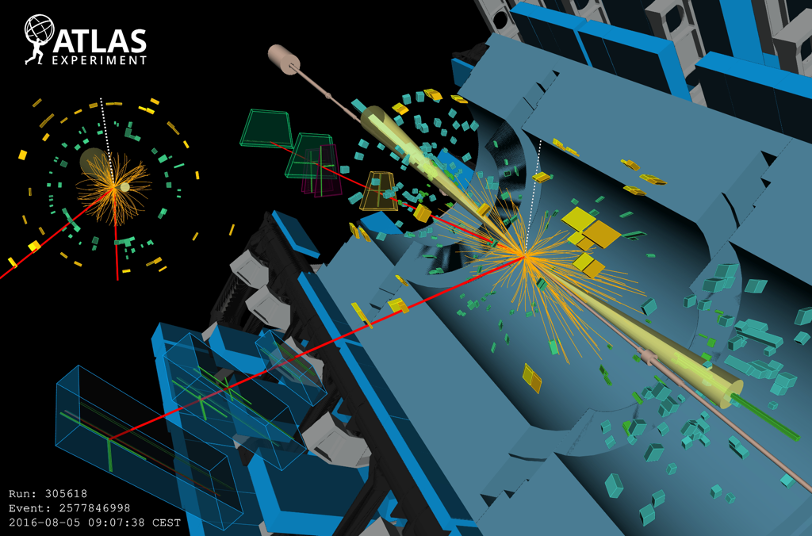The discovery of the Higgs boson by the ATLAS and CMS collaborations at CERN in 2012 opened a new window on the innermost workings of the Universe. It revealed the existence of a mysterious, ancient field with which elementary particles interact to acquire their all-important masses. This process is governed by a delicate mechanism called electroweak symmetry breaking, which was first proposed in 1964 but remains among the least understood phenomena of the Standard Model of particle physics. To probe this critical mechanism in the evolution of the Universe, physicists require a very large dataset of high-energy particle collisions.
Last week, at the Rencontres de Moriond conference, the ATLAS collaboration brought physicists a step closer to understanding the nature of the electroweak symmetry-breaking mechanism. Using the full proton-proton collision dataset from LHC Run 2, which was collected at an energy of 13 TeV from 2015 to 2018, the team presented the first evidence of a key process involving the W boson – one of the mediators of the weak force.
In the Standard Model of particle physics, the electromagnetic and the weak interactions are two sides of the same coin, unified as the electroweak interaction. It is thought that the electroweak interaction prevailed in the immediate aftermath of the Big Bang, when the Universe was extremely hot. But the symmetry between the two interactions somehow got broken, since the carriers of the weak interaction, the W and Z bosons, are observed to be massive, whereas the photon, which mediates the electromagnetic interaction, is massless. The breaking of this symmetry is realised in the Standard Model through the Brout-Englert-Higgs (BEH) mechanism. The discovery of the Higgs boson provided the first experimental confirmation of this mechanism. The next step is to measure the properties of the new particle, in particular how strongly it interacts with other elementary particles. These measurements are currently under way, with the aim of confirming that the masses of elementary matter particles are also the result of their interaction with the BEH field.
But the BEH mechanism also makes other predictions. Two processes in particular need to be measured to confirm that the mechanism is indeed as the Standard Model predicts: the interaction between longitudinally polarised W or Z bosons and the interaction of the Higgs boson with itself. While studies of Higgs self-interaction are expected to be possible at the earliest with the High-Luminosity LHC, which is due to begin operation in 2030, and will require a future collider to be pinned down in detail, first studies of the scattering of longitudinally polarised gauge bosons should be possible earlier.
For particles, polarisation refers to the way in which their spin is oriented in space. Longitudinally polarised particles have their spin perpendicular to the direction of their momentum, something that is only possible for particles that have mass. The existence of longitudinally polarised W and Z bosons (WL and ZL) is a direct consequence of the BEH mechanism, and the way in which these states interact with each other is therefore a very sensitive test of how the electroweak symmetry is broken. Studying this interaction should allow physicists to tell whether the symmetry breaking is realised via the minimal BEH mechanism or whether some new physics beyond the Standard Model is involved. The new ATLAS result provides a first glimpse of this elusive process.
The WL-WL interaction can be probed experimentally in proton-proton collisions by studying a process called vector-boson scattering (VBS). The VBS process can be visualised as a quark in each of the incoming protons emitting a W boson and those two W bosons interacting with each other, producing a pair of W or Z bosons. VBS can be identified by looking for collisions containing the decay products of the two bosons together with the two quarks that participated in the interaction forming two jets of particles going in opposite directions.
The new ATLAS analysis targets collisions in which the two W bosons decay into an electron or a muon and their respective neutrinos. In order to suppress backgrounds, mostly from processes involving top-quark pair production, both leptons are required to be of the same electrical charge. The experimental signature is thus a pair of same-charge leptons (electron-electron, muon-muon or electron-muon), two particle “jets” with opposite directions produced by the decays of the quarks, and missing energy coming from the undetectable neutrinos.
Once candidates for the VBS process are selected, the polarisation of the W bosons has to be determined. This is very challenging and can be done only via a thorough analysis of correlations between the directions of the reconstructed electrons and muons and the properties of other particles produced in the interaction. Dedicated neural networks have been trained to distinguish between transverse and longitudinal polarisation and made it possible to extract the final result: evidence with the statistical significance of 3.3 sigma that at least one of the two W bosons was longitudinally polarised.
“This measurement is a milestone in the studies of the core physics value via polarised boson interactions in vector-boson scattering processes,” says Yusheng Wu, the ATLAS Standard Model group convener. “It marks a path towards the eventual study of longitudinally polarised boson scattering using LHC Run-3 and HL-LHC data.”
Read more in the supporting ATLAS note and physics briefing.

